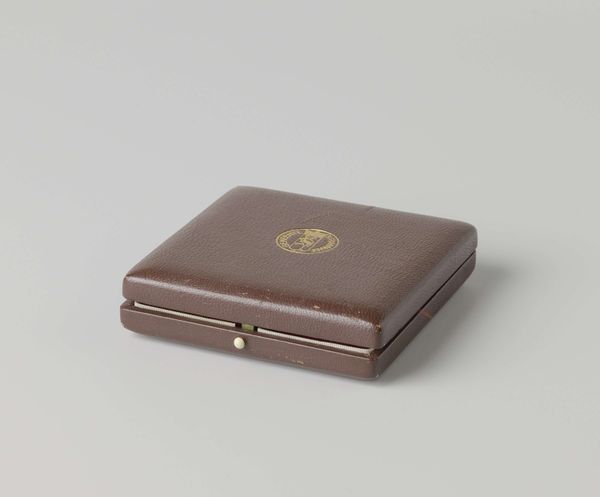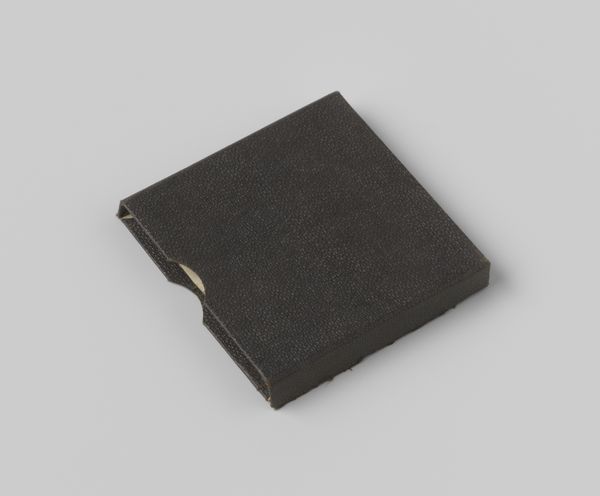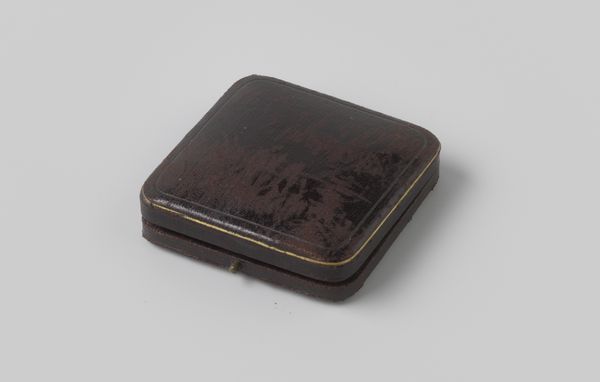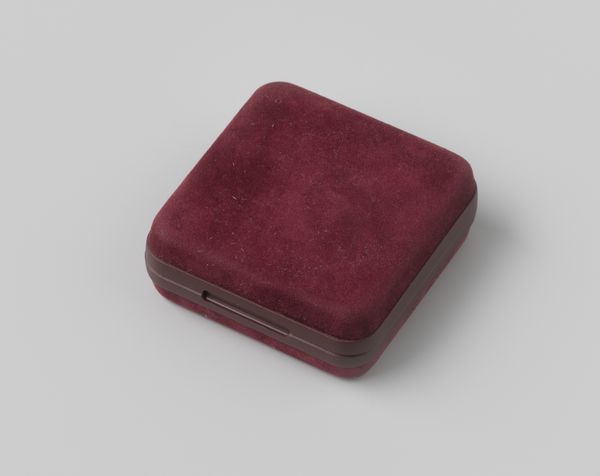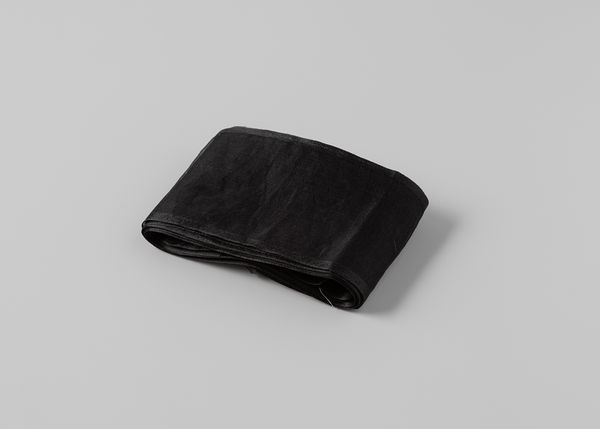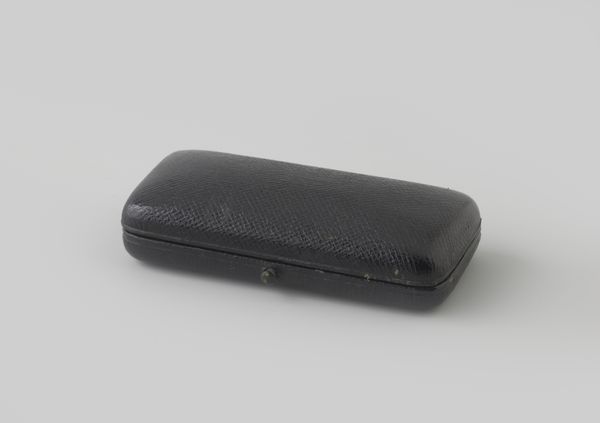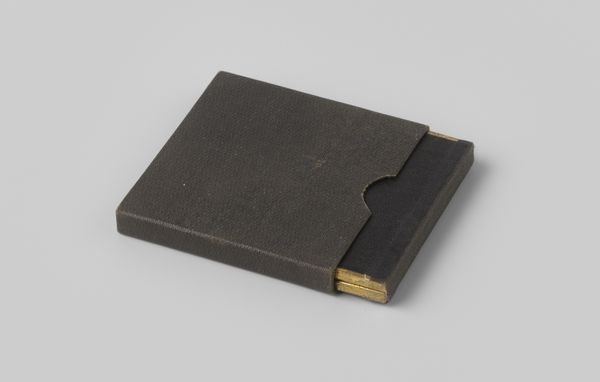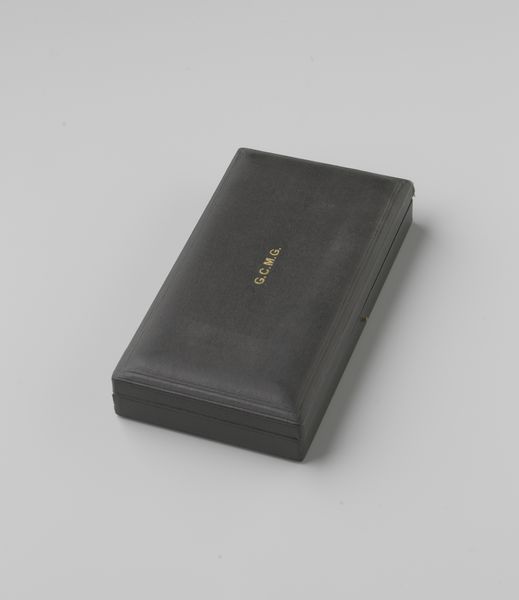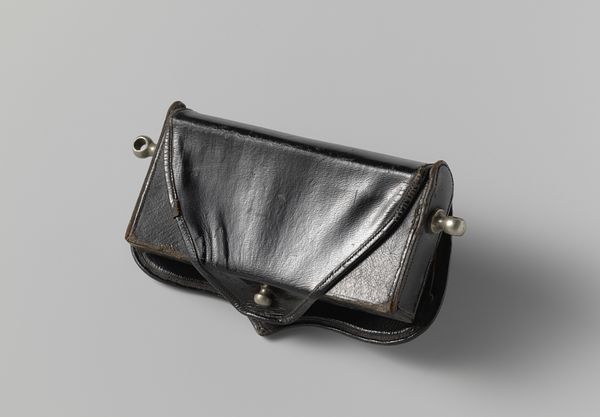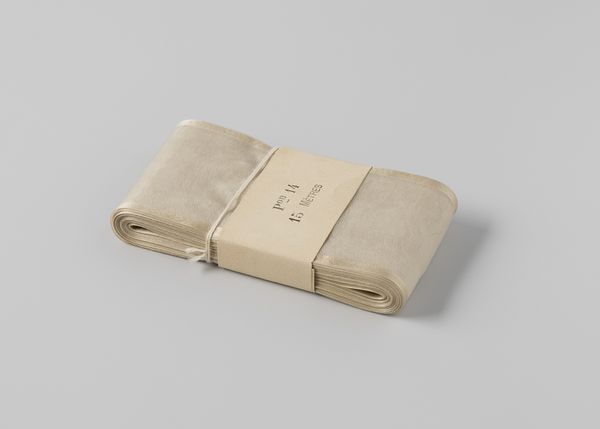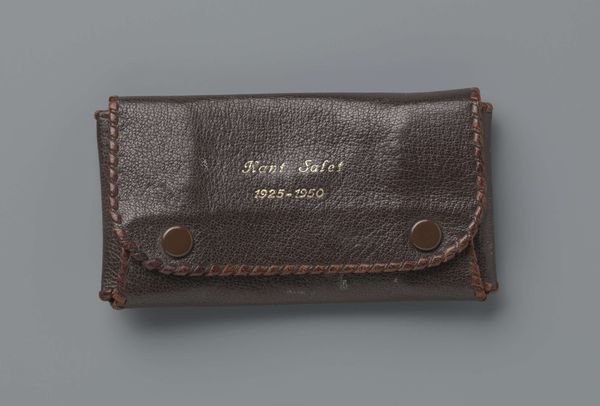
photography
#
portrait
#
still-life-photography
#
photography
#
decorative-art
Dimensions: length 50 mm, width 45 mm, width 86 mm, depth 11 mm, height 21 mm, width 15 mm
Copyright: Rijks Museum: Open Domain
Curator: The object we're examining is a photograph of a housing with a portrait of Giuseppe Garibaldi, dating from about 1860 to 1882. It's an anonymous work, categorized as both decorative art and still-life photography. Editor: Initially, it strikes me as restrained. Almost austere. A dark, boxy form, and what looks like embossed leather-like texture suggesting considerable craft, but holding back its story. Curator: Precisely. This seemingly simple container carries significant symbolic weight. Garibaldi, of course, was a central figure in the Italian Risorgimento, a unifier and national hero. The box itself, being a container, suggests preciousness and reverence. Editor: The materiality fascinates me. If it is indeed leatherette over wood, it speaks to Victorian ideals. It evokes ideas of social class – perhaps aimed for a specific demographic to promote Italian unification with this keepsake? How does the case help define the image? Curator: It would transform an intimate object—a portrait—into a kind of relic. It imbues the photographic portrait with almost a sacred quality, transforming it into a venerated image worthy of being protected and displayed prominently. The darkness even seems funereal, remembering him. Editor: It speaks to larger forces of production. This was designed to meet specific social needs during political turbulence. One wonders about who manufactured these cases. Were the portraits also mass produced? The sheer quantity that must have been involved reflects his status and influence. Curator: The duplication hints towards a standardization of symbolic value that is quite interesting. Every housed portrait creates a collective of Garibaldi memories, creating unifying historical forces. Editor: True. So, what appeared at first to be restrained craftsmanship, now reveals a potent and subtle tool within the Italian struggle of nationhood. Curator: Indeed. What starts as mere decoration soon shows how imagery shapes our sense of cultural inheritance.
Comments
No comments
Be the first to comment and join the conversation on the ultimate creative platform.
